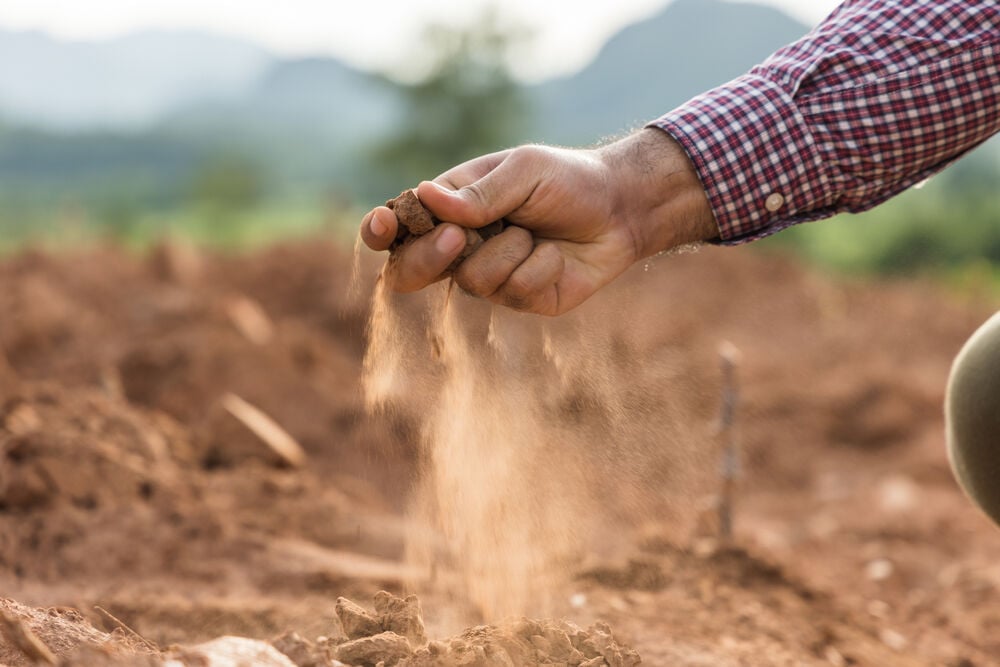Interior Department unveils $450 million funding boost for Upper Colorado River Basin

Years of dry conditions have led to record low water levels at Lake Powell and Lake Mead. New funding from the U.S. Department of the Interior aims to address mega-drought impacts, enhance community and landscape resilience, and aid species recovery in Colorado, New Mexico, Utah, and Wyoming.
SHUTTERSTOCK
The U.S. Department of the Interior announced new funding that the agency said would support ecosystem and habitat restoration in the Upper Colorado River Basin.
The initiative, whose funding came from the Inflation Reduction Act and follows earlier investments in water conservation and environmental benefits, aims to address mega-drought impacts, enhance community and landscape resilience, and aid species recovery in Colorado, New Mexico, Utah, and Wyoming, the agency said.
“As communities across the West continue to face the impacts of prolonged and worsening drought, this funding will enhance watershed health and conservation throughout the Upper Basin,” U.S. Department of Interior Secretary Deb Haaland said in a news release. “Thanks to historic funding from the Investing in America agenda, the Interior Department is using every resource available to ensure the sustainability of the Colorado River system for the families, farms and economies that rely on it.”
Along with providing water for more than 40 million people and fueling hydropower resources in seven U.S. states, the river is a crucial resource for 30 tribal nations and two states in Mexico. It supports 5.5 million acres of agriculture and agricultural communities across the West, as well as important ecosystems and endangered species.
But the Colorado River Basin is facing a crisis resulting from more than two decades of drought and overconsumption in the West.
Despite improved hydrology in recent months, a historic 23-year drought has led to record low water levels at Lake Powell and Lake Mead.
Earlier this year, six of the seven river commissioners gathered at the 2024 Getches-Wilkinson conference on the Colorado River at the University of Colorado Boulder’s law school, where they talked about solutions but also revealed their differences.
The commissioners, including Colorado’s Becky Mitchell, are negotiating the river’s future and hope to reach an agreement that would manage water allocations and ensure that America’s two largest reservoirs, both located in the Southwest, don’t fall below critical water levels.
A spokesperson for Mitchell’s office declined to comment.
Drought conditions have resulted in what many experts call a “new normal,” and the next three years will determine how the seven states will handle a water supply that falls short of demand.
While funding won’t remedy all of the Basin’s woes, Bureau of Reclamation Commissioner Camille Calimlim Touton said it would help.
“This phase of funding will deliver crucial environmental benefits, driving long-term conservation efforts and mitigating drought severity in each Upper Basin State,” she said. “Reclamation will continue to work collaboratively with stakeholders to leverage this once-in-a-generation investment from the Biden-Harris administration to benefit ecosystem health and water resources.”
The Biden administration has been touting its “ Investing in America” agenda, saying it represents the largest investment in “climate resilience” in the nation’s history. Through the Bipartisan Infrastructure Law, $8.3 billion will be invested over five years for water infrastructure projects, including rural water, water storage, conservation and conveyance, nature-based solutions, dam safety, water purification and reuse, and desalination, the administration said.
The Inflation Reduction Act provides an additional $4.6 billion to strengthen drought resilience across the West.
“We look forward to seeing federal money come to Colorado and to working with the Bureau of Reclamation on this,” said Amy Ostdiek, the section chief of interstate, federal, and water information section at the Colorado Water Conservation Board.
Grant applicants must be public or tribal entities or be partnered with such entities. The Upper Colorado River Basin System Conservation and Efficiency Program website provides more detailed information for applicants, including eligibility and evaluation criteria and instructions for applying.
Applications for projects will be accepted through Sept. 27. Selections are anticipated to be made by the end of 2024 or early in 2025.
Marianne Goodland contributed to this story.






